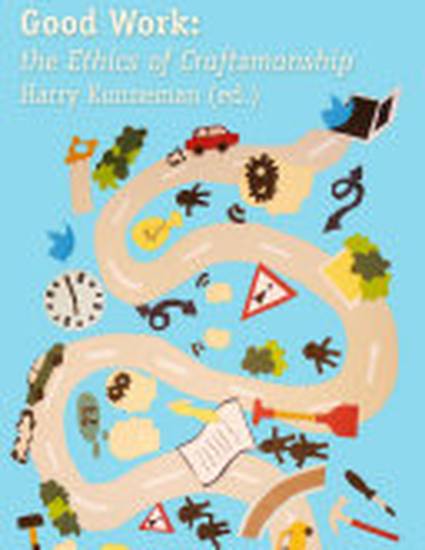
Contribution to Book
APPLICATION OF MIXED METHODS AND THIRD-PARTY HELP IN A HARD-TO-REACH POPULATION
Good Work: the Ethics of Craftsmanship
(2012)
Abstract
Collecting extensive retrospective data such as life histories in the field of social sciences has been fraught with recall errors compromising the quality of the data collected (Glasner & van der Vaart, 2009). Data collection of life histories gets even more challenging when it has to be done with hard-to-reach populations such as households who are victims of involuntary displacement and resettlement due to disasters and infrastructure projects. This study aims to assess the data quality of life histories of such a population in the Philippines. The people concerned have very low level of income, education and literacy, live in a complex situation, and have little trust in authorities. Knowledge on the organization of autobiographical memory is known to be a help for researchers in improving the quality of survey respondents' retrospective report of what, when, and how often events happened. Researchers interested in life histories introduced the use of event or life history calendars for their potential in the use of the top-down, sequential, and parallel cues available in the structure of autobiographical memory (Freedman et al., 1988; Belli, 1998; Glasner & Van der Vaart, 2009). The calendar provides respondents with a graphical time frame in which life history information can be represented. The method enables them to visually relate events to each other, thereby deriving timing and content cues from the autobiographical context. Furthermore, the researcher can discover incompleteness and in¬consistencies in retrospective reports. Calendar instruments have been found to be a good substitute for a longitudinal study and an effective way to collect retrospective data from life histories. When compared with conventional questionnaires, the calendar method yields greater recall accuracy as regards the number of reported events, dates and characteristics of events (Belli et al., 2007; Van der Vaart, 2004; Van der Vaart and Glasner, 2007; Yoshihama et al., 2005) The application of the calendar method in this study is most appropriate to trace retrospectively the formation of households “social capital”. However, given the complex situation of our target ‘hard to reach’ population (see below), we added one feature to this calendar method: the option to include the respondents’ household co-members or neighbours in certain parts of the interview in order to help to recollect the requested information. This seems especially appropriate given the multifaceted nature of the concept of social capital. Following Bourdieu and Wacquant (1992, p. 119) it can be defined as the “sum of resources, actual or virtual, that accrue to an individual or a group by virtue of possessing a durable network of more or less institutionalized relationships of mutual acquaintance and recognition”. However the benefits of allowing respondents to ask ‘bystanders’ or ‘third parties’ for help in recollecting information are far from self-evident. In standardized survey interviews it has been long a golden rule that only the beforehand selected target respondent should be interviewed and that nobody else but the interviewer should be present (Fowler & Mangione, 1990). However, research indicated that the strict rules for standardization (also including reading questions as written, etc.) could also harm data quality. This led to the development of so-called ‘conversational interviewing’ (Conrad & Schober, 2005) which allowed interviewers to reformulate question in different words, while containing the meaning of the question. In some forms of calendar interviewing rather flexible interviewing styles are used, combining con¬versational interviewing for scripted questions with asking about calendar domains even without scripted questions and going through the various question (life) domains in a flexible way (Belli, 1998; Belli et al., 2007). Still, all this is only focused at the individual respondent. Several situations might exist in which the requested information is ‘general information’ (e.g. about a community) that is not available in documents but is known by many members of a population. In addition, also personal or family related information might be shared socially between community members. It is well known that in more collectivistic oriented cultures such phenomena are more important than in more individualistic oriented cultures (Hofstede, 1980). In these cases, especially when the individual respondent has a hard task of recalling ‘shared information’, the help of ‘third parties’ in fact might add to data quality instead of biasing it. The present paper explores the impact on data quality of a tailor-made event history calendar in which the ‘help of third parties’ is integrated, as part of a study on the role of social capital in involuntary resettlement. The focus is to obtain ‘social capital’ histories at the level of neighbourhoods, households, and heads of households in an urban resettlement site.
Keywords
- Calendar method,
- third-party help,
- hard-to-reach population,
- resettlement
Disciplines
Publication Date
January, 2012
Editor
H. Kunneman
Publisher
Humanistics University Press
Citation Information
Melissa Quetulio-Navarra. "APPLICATION OF MIXED METHODS AND THIRD-PARTY HELP IN A HARD-TO-REACH POPULATION" Good Work: the Ethics of Craftsmanship (2012) Available at: http://works.bepress.com/melissa-quetulio-navarra/14/
